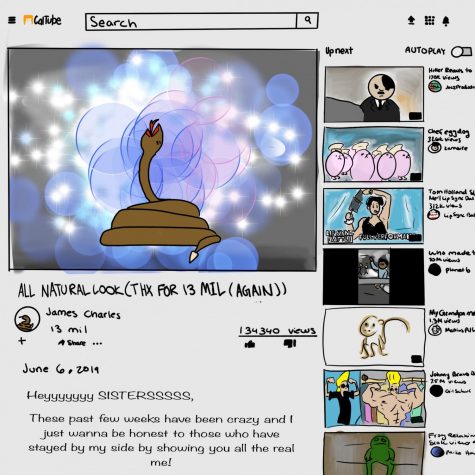New SAT is here
Changes to test viewed with skepticism before being administered on March 5
The SAT has been one of the most intimidating and constant institutions that has loomed over high schoolers since its creation in the 1920s.
Over the last few years, the SAT has been undergoing a very high profile revamping because of America’s new focus on Common Core standards and the test’s influence over nearly 1.7 million students worldwide, according to the Washington Post.
The new SAT launched its very first test on March 5.
The old SAT’s way of testing has long been the cause of worry for many students. The new test has been redesigned under the premise of making things easier for and more relevant to the average high school student.
According to Business Insider, the new test includes no obscure vocabulary, fewer answer choices, an optional essay (which adds 50 minutes to students’ testing time), and no penalty for guessing.
No longer will students be able to say that they scored a perfect 2400 on the test as the test has dropped back down to a 1600 perfect score system.
“Students like myself get nervous during a big test like this one [the SAT],” said junior Joshua Kyser. “I know the material but still get answers wrong because I second-guess myself when picking answers.
“The absence of a guessing penalty on the new test prevents students from doing this,” he continued. “For me it takes a lot off my shoulders.”
The new test and its reforms have caused many students to question how exactly they should study and prepare.
“Since the test is so new I would advise students to prepare for at least two months before they plan to take the new SAT,” said counselor Erin Hill, “Try to get a good understanding of the new test and answer format before taking it. Practice, practice, practice! But don’t overwhelm yourself.”
Junior Sam Rodrigue agrees with this approach to preparing for the test.
“I’m definitely going to Mrs. [Harvalee] Grimm for assistance,” said junior Sam Rodrigue, “The prep packets she gives students to study are very helpful.”
As with many education reforms and nationwide curriculum changes, such as common core, not everyone seems to be excited for the new SAT.
Since this is the first year that the new SAT is being administered, many do not look forward to the idea of being metaphorical guinea pigs for the new test. Should something go awry, they are the ones that will pay the price.
“I feel nervous,” said freshman Kaitlyn Leong, “I don’t know how it’s [the SAT] going to turn out and that concerns me greatly.”
Unfamiliarity is always a gamble, and when it comes to something as important as test scores, not many are willing to play. But the luxury of having the choice of taking the old SAT over the new one is now gone. The situation for those who have not yet taken the test is much different.
“Students don’t like tests where the format is unfamiliar,” said sophomore Michelle Hughes, “I am one of those students.”
While the SAT has long been one of the major standardized tests for high school students, on the other side of the spectrum is its direct rival, the ACT, which is long lauded for being a fairer test and more relevant to what students are actually learning in school.
The new SAT is supposed to emulate this, and in effect, make it much more similar to the ACT. Both tests now feature the optional essay and no guessing penalty.
The SAT is now a three-hour long test, with a 50-minute optional essay. In comparison, the ACT is two hours and 55 minutes with a 40-minute optional essay.
The ACT continues to feature a science section, whereas the SAT does not. Notably, the SAT now includes a no-calculator section in its math portion.
About 1.7 million students in the class of 2014 took the SAT, and about 1.8 million took the ACT in 2014.
The ACT’s numbers overtook the SAT in 2012, according to the Washington Post and the National Center for Fair & Open Testing. The numbers of test takers for both are on an upward trend.
“I’m probably going to take the ACT,” junior Emily Wu said. “I’ve already taken the old one, and don’t see the need to take it again.”
Many colleges throughout America state that they will still accept scores from the old SAT through 2018, but for those who have not already taken it, or are after the class of 2018, the new SAT will be mandatory for them.
The revamped test also draws heavily from the common core with common math and reading benchmarks and standards adopted by most states.
In a study from the National Center for Fair & Open Testing using data from the College Board, students from the wealthiest families outscored those from the poorest by nearly 400 points on the old SAT.
Given the widespread use of the SAT in college admissions, the implications of a wealth bias were slightly damning.
In the past, the SAT has been known for being a test of tricks and trap questions. The wealthy who can afford to go to expensive prep programs learn how to bypass the various questions on the SAT.
The test has been criticized for creating a system that panders to children with access to test prep and resources. The SAT was revised in part to help reduce the economic gaps in attempt to eliminate the need for expensive prep programs and test on more relevant information being taught in school.
“The new SAT will align better with what kids are learning in school,” Ned Johnson, founder of Prepmaster, told the New York Times. “But if you haven’t gone to a school that prepared you well, the test isn’t going to serve you well.”
The College Board opened the doors on March 5 and ushered in the age of the new SAT. With all change comes skepticism, criticism, and doubt.
The new SAT is ambitious in its claims and attempts of being a fairer, more relevant test, and yet, is it really? Only time and experience will tell.








